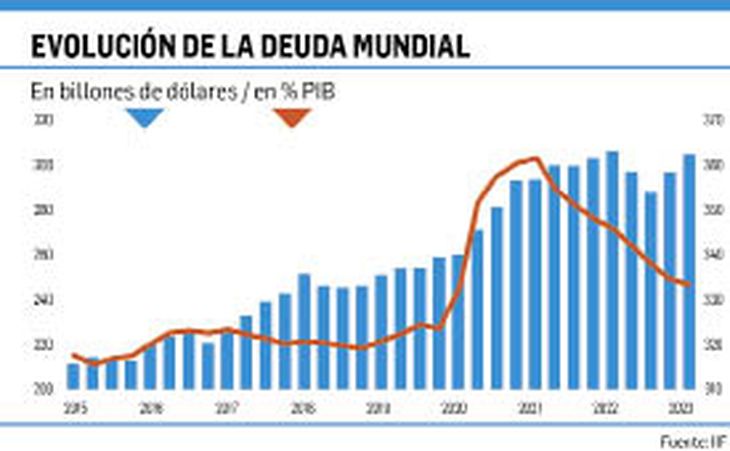The world had already been “pedaling” since before the pandemic, but now liabilities have reached worrying levels, especially due to the impact of higher international interest rates.
The global debt stock grew by US$8.3 trillion in the first quarter of the year, reaching an almost record level of US$305 trillion (equivalent to 335% of global GDP), of which more than US$100 billion correspond to emerging markets. The data collected by the Institute of International Finance (IIF) They issue dire warnings, especially in the aftermath of the recent US bank failures and Credit Suisse bust, as the combination of high debt levels and rising interest rates has raised debt-servicing costs, making which raises concerns about leverage in the financial system.
The content you want to access is exclusive to subscribers.
He quarterly increase in world debt it is the second in a row, after two quarters of sharp declines during the rapid tightening of monetary policy last year. According to the IIF, the rebound was mainly driven by non-financial corporations and the public sector. The increase was most pronounced in developed markets, led by Japan, the US, France and the UK.


P4_GRAFF 2x6_opt.jpeg

When comparing the current stock of global indebtedness with that in force before the pandemic, it is observed that world debt is now $45 trillion higher, What’s more, IIF experts expect it to continue rising rapidly because despite concerns about a potential credit crunch following recent turmoil in the US and Swiss banking sectors, government borrowing needs remain high.
Factors putting pressure on government balance sheets
In addition, “a combination of factors including population aging, rising health care costs, and substantial climate financing gaps continue to put pressure on government balance sheets,” they explain from the IIF. Increased geopolitical tensions are also expected to drive further increases in national defense spending over the medium term, which could affect the credit profile of sovereign and corporate borrowers. “If this trend continues, it will have significant implications for international debt markets, particularly if interest rates stay high for longer,” says the IIF. in his latest Global Debt Monitor.
As for emerging markets, total debt now exceeds $100 trillion and while global debt has stabilized at around 335% of GDP, almost 75% corresponds to emerging markets that experienced rising debt levels. in dollar terms during the first quarter of 2023. Among emerging markets, the largest increases were seen in China, Mexico, Brazil, India and Turkeywhich pushed the total debt of emerging countries to an all-time high of more than US$100 trillion (equivalent to 250% of GDP), compared to US$75 trillion in 2019.
When it comes to forecasts, or rather, warnings, the IIF points out that “with financial conditions at their most restrictive levels since the 2008-09 financial crisis, a credit crunch would cause higher default rates and would give rise to more “zombie companies”, which are already close to 14% of companies listed on Wall Street” and adds that “recent turmoil in the banking sector could prompt further expansion of fast-moving private debt markets growth, which now exceeds US$2 trillion.
Source: Ambito




